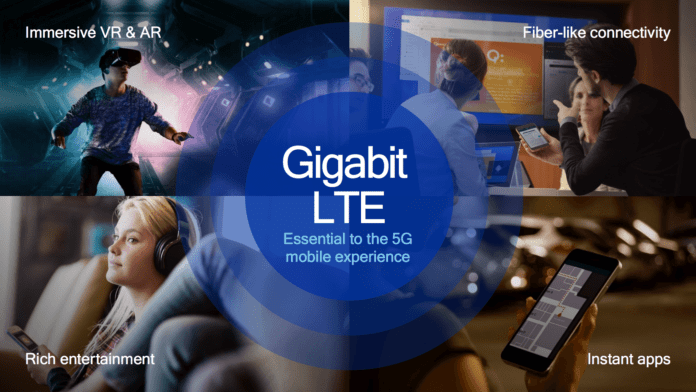The Moto Z supports gigabit LTE service, which Verizon says will be launched ‘later this year’
Earlier this week Verizon announced preorder availability of the Moto Z2 Force Edition, a high-end smartphone, manufactured by Motorola, that boasts a range of cool technology including a “shatterproof” display, 12 megapixel dual rear cameras, advanced charging capabilities and, most importantly, Qualcomm’s Snapdragon 835 mobile platform and X16 LTE modem, which supports gigabit LTE connectivity.
In the announcement, Verizon says it will launch network support for gigabit-class LTE service “later this year,” to enable the “transfer [of] movies, photos and large files in no time with some of the fastest possible data speeds.” Beyond those generalities, Verizon provided no specifics on the network aspects of the apparent planned roll out of gigabit LTE. Verizon media reps didn’t respond to requests for additional detail on the gigabit LTE network plans.
To learn more about the technology that underlies gigabit LTE, check out this presentation from Qualcomm. The high-level is that the Snapdragon 835 platform with integrated X16 modem supports four-channel carrier aggregation–including of unlicensed spectrum with License Assisted Access–4×4 MIMO and 256 QAM.
All four U.S. carriers are working on delivering gigabit LTE service. Sprint claimed a domestic first in March with a showcase in New Orleans, La. Also in March, T-Mobile US pinned its gigabit LTE ambitions to the Samsung Galaxy S8 and S8+ preorder. And, in April, AT&T, using the “5G Evolution” branding, announced plans to launch gigabit LTE service, starting in Austin, Texas, and expanding to 20 more metros; that’s also tied to the latest Samsung flagship phones.
These gigabit LTE launches seem to be pinned to device releases, which makes sense given the need for a compatible device to support the network upgrades. But there’s a bigger picture here.
In a recent interview with RCR Wireless News, Sherif Hanna, Qualcomm staff manager of technical marketing, noted, “In each case the operator is trying to highlight a device that will give their network an edge. It is definitely in the interest of the operator to seed the devices into the network both for marketing claims and for actual capacity. Anything that can help them improve network efficiency will help them cope with network capacity related to unlimited data plans.”
The point here, which we’ll explore in-depth in future coverage, is that gigabit LTE devices deliver a better end-user experience by making use of spectrum and network resources more efficiently. Take a step back from that, and note that more efficient network resource utilization associated with gigabit LTE devices means there are potentially more network resources available to users with non-gigabit LTE devices. So, the net-net here is that the more gigabit LTE devices on the network, the better the network performs for all the users. While the majority of gigabit LTE discussion has been couched in terms of bridging the gap between LTE and 5G, there’s a very real benefit that can be realized today. Stay tuned.

